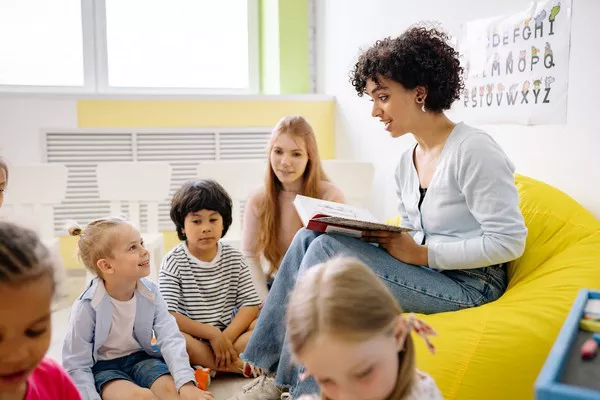Meeting friends for the first time can be both exciting and daunting. As a psychologist, I understand that forming new friendships is a vital aspect of human social life, contributing significantly to emotional well-being and overall happiness. This article will explore effective strategies to meet new people, navigate initial interactions, and build lasting friendships.
The Importance of Friendships
Friendships play a crucial role in our lives. They provide support, enhance our sense of belonging, and contribute to our emotional and mental health. Research shows that strong social connections can lead to increased happiness, reduced stress, and even a longer lifespan. Therefore, seeking to form friendships is not only beneficial but essential for personal growth and well-being.
Overcoming Fear of Meeting New People
Before diving into strategies for meeting friends, it’s important to address the common fears associated with social interactions. Anxiety about meeting new people can stem from several sources:
Fear of Rejection: The possibility of not being accepted or liked can be intimidating. This fear often prevents individuals from initiating conversations or attending social events.
Social Anxiety: For some, the prospect of social interactions can trigger physical symptoms like sweating, increased heart rate, or nervousness, making it difficult to engage with others.
Perfectionism: The desire to make a perfect first impression can lead to overthinking and self-doubt.
To combat these fears, it’s helpful to reframe your mindset. Understand that everyone experiences similar feelings of apprehension when meeting new people. Acknowledging this can help normalize your experience and reduce anxiety.
Effective Strategies to Meet New Friends
1. Identify Your Interests
Finding friends with similar interests is a great starting point. When you engage in activities you enjoy, you are more likely to meet like-minded individuals. Consider the following:
Hobbies: Think about activities you enjoy, such as sports, art, or reading. Joining a club or group focused on these interests can facilitate connections.
Volunteer Opportunities: Participating in community service or volunteering can help you meet compassionate individuals who share your values.
Classes and Workshops: Enrolling in classes (e.g., cooking, dancing, or fitness) not only helps you learn something new but also provides a structured environment to meet people.
2. Attend Social Events
Social gatherings, whether formal or informal, are ideal opportunities to meet new friends. Consider these options:
Community Events: Local festivals, fairs, or cultural events can provide a relaxed environment to engage with others.
Meetup Groups: Websites like Meetup.com allow you to find local groups based on shared interests. Attend events that catch your eye, whether it’s a book club, hiking group, or a gaming night.
Networking Events: Professional networking events can also be a great way to meet people while expanding your professional circle.
3. Utilize Social Media and Apps
In today’s digital age, social media and friendship apps can facilitate connections:
Social Media Platforms: Use platforms like Facebook or Instagram to join groups related to your interests. Participate in discussions and engage with members to build rapport.
Friendship Apps: Apps like Bumble BFF or Friender are designed to help people make platonic connections. Create a profile highlighting your interests and start connecting with others seeking friendship.
4. Be Open and Approachable
Your body language and demeanor can greatly influence how others perceive you. Here are some tips to appear more approachable:
Smile: A genuine smile can make you seem friendly and welcoming. It invites others to engage with you.
Maintain Open Body Language: Avoid crossing your arms or turning away. Instead, face others and keep your arms relaxed at your sides.
Make Eye Contact: This shows that you are engaged and interested in the conversation, which can help establish a connection.
5. Initiate Conversations
Starting a conversation can be intimidating, but it’s essential for forming friendships. Here are some strategies:
Use Open-Ended Questions: Instead of asking yes or no questions, ask about opinions or experiences. For example, “What do you think about this event?” encourages more engaging dialogue.
Share Personal Stories: Opening up about yourself can prompt others to share, fostering a sense of connection. Just ensure you balance sharing and listening.
Compliments and Observations: Compliment something specific about the person or make observations about your surroundings. For example, “I love your shirt! Where did you get it?” can lead to a more in-depth conversation.
See Also: What Are the Benefits of Friendship?
6. Follow Up
After your initial meeting, following up is crucial to establish a deeper connection:
Exchange Contact Information: If you feel a positive connection, exchange phone numbers or social media handles. This shows genuine interest in maintaining the friendship.
Plan a Follow-Up Activity: Suggest a specific activity you both might enjoy. For example, “Would you like to grab coffee next week?” is a direct way to foster the budding friendship.
Navigating Initial Interactions
Once you’ve initiated contact, the next step is navigating your interactions. Here are some tips:
1. Practice Active Listening
Active listening involves fully engaging with the speaker, showing that you value their words. Here’s how to practice it:
Give Your Full Attention: Put away distractions like your phone and focus on the person speaking.
Reflect Back: Summarize or paraphrase what they’ve said to show understanding. For example, “So you’re saying you really enjoyed that concert last week?”
Ask Follow-Up Questions: This demonstrates interest and encourages deeper conversation. For instance, “What was your favorite part of the concert?”
2. Be Yourself
Authenticity is key to forming genuine friendships. Be honest about your interests, opinions, and feelings. Trying to be someone you’re not can lead to unsustainable relationships. Remember, the goal is to find friends who appreciate you for who you truly are.
3. Embrace Vulnerability
Opening up about your thoughts and feelings can strengthen bonds. Share your experiences, fears, or even humorous stories. Vulnerability fosters trust and encourages others to reciprocate, deepening the friendship.
Dealing with Rejection
Not every interaction will lead to a lasting friendship, and that’s okay. Dealing with rejection can be difficult, but it’s a natural part of the social process. Here are some tips for handling rejection:
Don’t Take It Personally: Remember that everyone has their preferences and circumstances. Just because someone doesn’t connect with you doesn’t diminish your worth.
Learn from the Experience: Reflect on the interaction. Consider what went well and what you might improve next time. Use it as a learning opportunity.
Stay Positive: Focus on the friendships you are building rather than fixating on those that didn’t work out. Maintain a positive outlook and keep trying.
Building Lasting Friendships
Once you’ve made connections, focus on nurturing those friendships to ensure they grow. Here are some strategies:
1. Be Consistent
Consistency is vital for strengthening friendships. Make an effort to reach out regularly, whether through texts, calls, or planned outings. This shows that you value the relationship and are invested in maintaining it.
2. Be Supportive
Being a good friend involves offering support and encouragement. Celebrate each other’s successes and be there during tough times. Offering a listening ear or a helping hand can significantly deepen your connection.
3. Communicate Openly
Open communication is crucial for any friendship. Share your thoughts and feelings honestly and encourage your friends to do the same. Address conflicts calmly and constructively, allowing the relationship to evolve positively.
Maintaining Friendships Over Time
Friendships require effort to maintain, especially as life circumstances change. Here are some tips for sustaining friendships over time:
Adapt to Changes: Life changes, such as moving, new jobs, or starting families, can affect friendships. Be flexible and willing to adapt your friendship dynamics.
Schedule Regular Check-Ins: Make an effort to connect regularly, even if it’s just a quick message or video call. This shows that you care and keeps the friendship alive.
Create New Memories: Plan new activities or adventures together to keep the friendship fresh and exciting. Shared experiences can strengthen bonds.
Conclusion
Meeting friends for the first time can be a fulfilling journey that significantly enhances your life. By understanding the importance of friendships, overcoming fears, and employing effective strategies, you can navigate the process of making new connections with confidence. Remember, friendships take time and effort to cultivate, but the rewards—support, joy, and a sense of belonging—are well worth it. Embrace the journey, be open to new experiences, and cherish the friendships you form along the way.
Related topics:


























